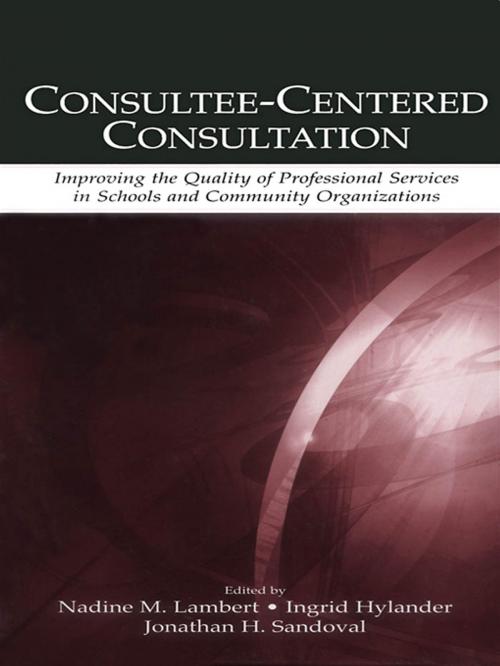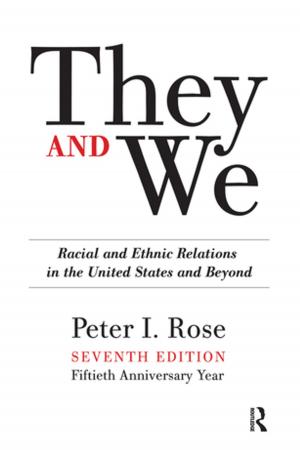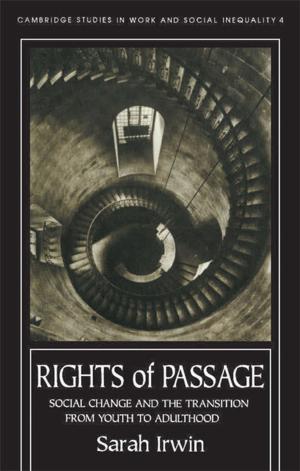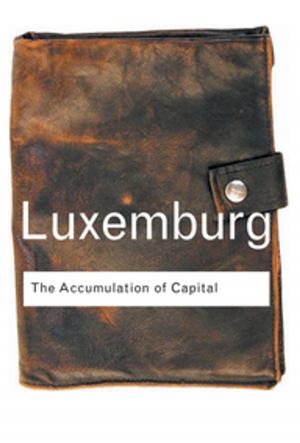Consultee-Centered Consultation
Improving the Quality of Professional Services in Schools and Community Organizations
Nonfiction, Reference & Language, Education & Teaching, Educational Theory, Evaluation, Counseling & Guidance| Author: | ISBN: | 9781135627140 | |
| Publisher: | Taylor and Francis | Publication: | May 20, 2004 |
| Imprint: | Routledge | Language: | English |
| Author: | |
| ISBN: | 9781135627140 |
| Publisher: | Taylor and Francis |
| Publication: | May 20, 2004 |
| Imprint: | Routledge |
| Language: | English |
This book describes the theory, methods, and contemporary applications of consultee-centered consultation, a non-hierarchical, non-prescriptive helping relationship between a consultant and a person or group (consultee) seeking professional help with a client. The goal is to provide help in re-conceptualizing the consultee's work problem thereby 1) improving their relationship with the client and 2) expanding the professional repertoire of both consultant and consultee. Key features of this outstanding new book include the following:
*Conceptual Change Focus--The process of conceptual change in both the consultant and consultee is stressed throughout the book.
*Historical Perspectives--The first section describes the historical evolution of consultee-centered consultation beginning with the work of Gerald Caplan and progressing to its broad, contemporary version that accommodates various professions and multiple psychological orientations.
*Numerous Examples--The book provides a wealth of examples illustrating how consultee-centered consultation can be applied within school, child-care, social welfare, hospital and corporate settings.
*International Focus--The chapter contributors represent a wide range of geographical and professional expertise.
*Evaluation Methods--The final section provides examples of evaluation methods.
This volume is appropriate for school, counseling, and clinical and child clinical psychologists; human service professionals working with professionals from other disciplines; and special education leaders.
This book describes the theory, methods, and contemporary applications of consultee-centered consultation, a non-hierarchical, non-prescriptive helping relationship between a consultant and a person or group (consultee) seeking professional help with a client. The goal is to provide help in re-conceptualizing the consultee's work problem thereby 1) improving their relationship with the client and 2) expanding the professional repertoire of both consultant and consultee. Key features of this outstanding new book include the following:
*Conceptual Change Focus--The process of conceptual change in both the consultant and consultee is stressed throughout the book.
*Historical Perspectives--The first section describes the historical evolution of consultee-centered consultation beginning with the work of Gerald Caplan and progressing to its broad, contemporary version that accommodates various professions and multiple psychological orientations.
*Numerous Examples--The book provides a wealth of examples illustrating how consultee-centered consultation can be applied within school, child-care, social welfare, hospital and corporate settings.
*International Focus--The chapter contributors represent a wide range of geographical and professional expertise.
*Evaluation Methods--The final section provides examples of evaluation methods.
This volume is appropriate for school, counseling, and clinical and child clinical psychologists; human service professionals working with professionals from other disciplines; and special education leaders.















